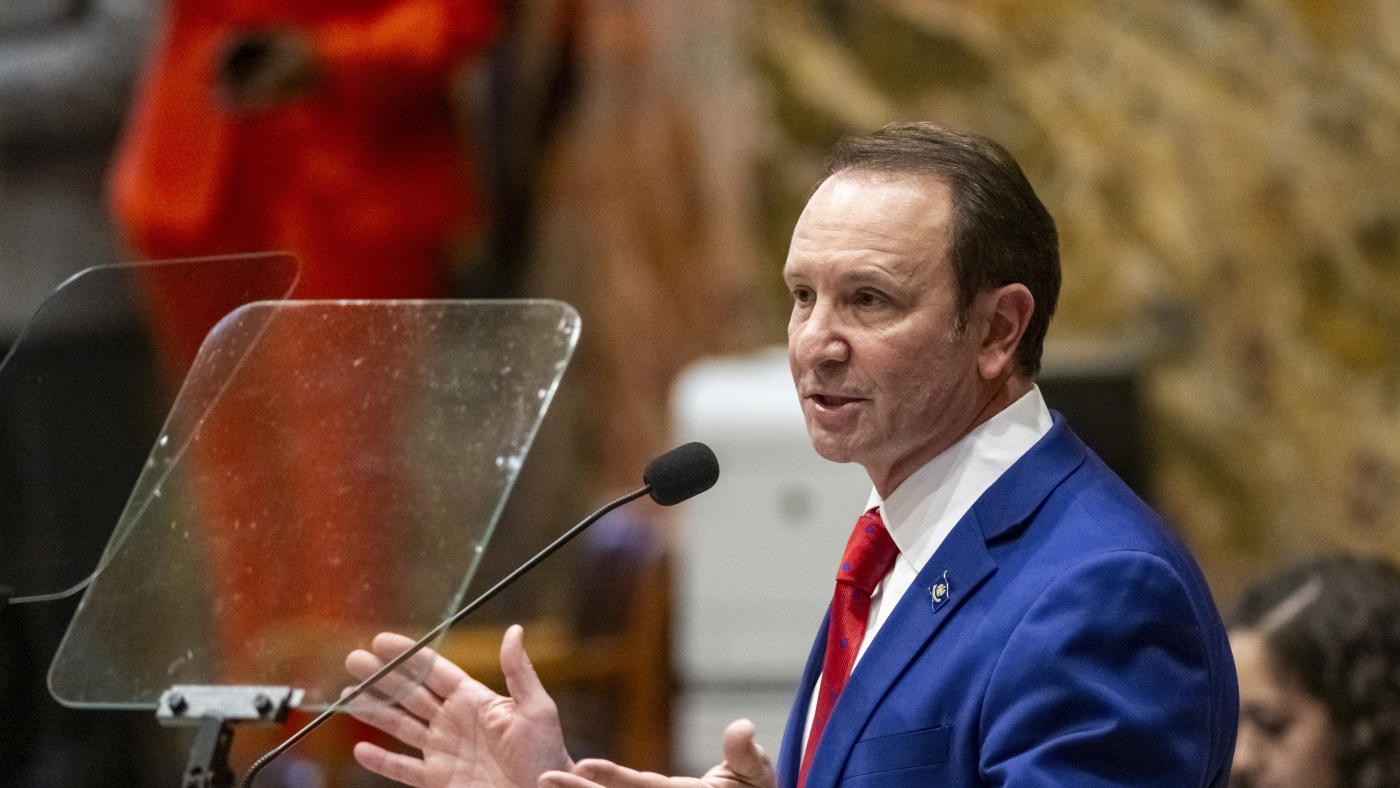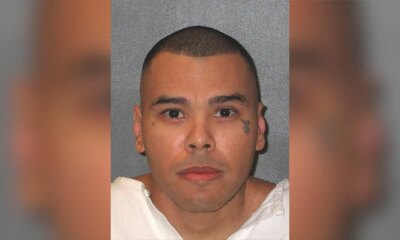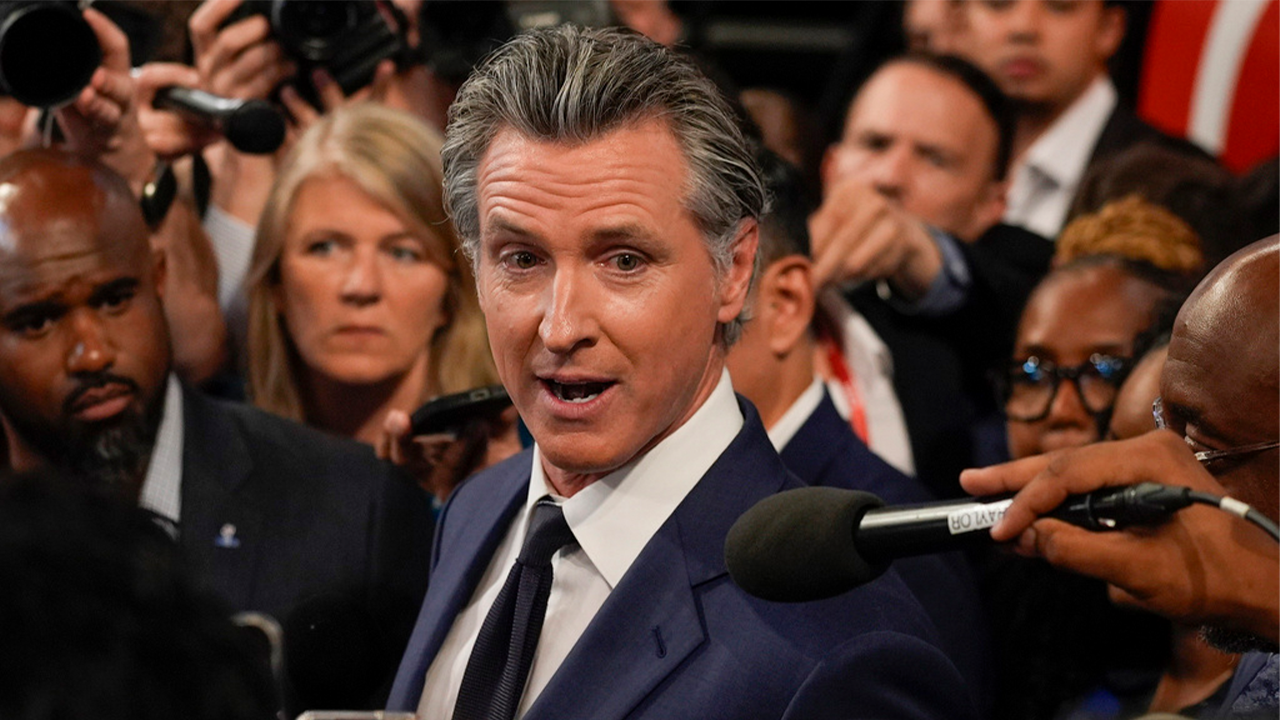New York
At South Brooklyn’s Beaches, a Battle of the Buoys

Eight years ago, Capri Djatiasmoro watched helplessly as four Jet Skis ran over her friend while he was swimming at Brighton Beach. “They stopped to see if he was alive, but then they kept going,” she said. “He ended up at Coney Island Hospital getting 10 staples in his head.”
It had to be illegal for the Jet Skis to come so close to a beach where people were swimming, Ms. Djatiasmoro thought. And it was. New York State law prohibits personal watercraft from coming within 500 feet of a designated swimming area. Decades ago, a line of buoys ran parallel to the shore, marking the boundary between swimmers and boaters. But they had long since disappeared from the shoreline around New York City.
“Some boat and Jet Ski drivers don’t even know there is this law,” said Ms. Djatiasmoro, 72, a retired advertising executive and avid open-water swimmer who lives in Brooklyn. “Some know, but in the open water it’s hard to tell exactly where that mark is.” Jet Skis regularly come very close to the borough’s beaches, she said, especially in the late afternoon, after lifeguards have left for the day.
Ms. Djatiasmoro swims every day, and she organizes events where hundreds of New Yorkers swim long distances, such as from the Verrazzano-Narrows Bridge to Sandy Hook, N.J., or from Coney Island to Manhattan Beach. “I love the ocean, I love swimming, and I want to keep people safe while enjoying these things,” she said. She vowed to do whatever she could to protect swimmers. That meant finding out why the visible 500-foot boundary had vanished — and how to re-establish it.
That turned out to be more complicated than she expected.
First, she said, she met with Martin Maher, Brooklyn Parks Commissioner for the New York City Department of Parks and Recreation. That department, along with the New York Police Department and the U.S. Coast Guard, is responsible for the city’s waterways. The Parks Department’s position, she was told, was that replacing the buoys could lure swimmers farther out than they should go.
“Buoys can be useful for indicating the distance to the shore,” Chris Clark, a department spokesman, wrote in an email to The New York Times. “However, historically, we have observed that some swimmers view the buoys as goals to reach, causing them to swim out to unsafe distances.” For that reason, he said, “we have not used buoys in this area for this purpose since the 1990s.”
Ms. Djatiasmoro said she had also met with representatives from the Police Department and the Coast Guard. “Both said it’s not in their jurisdiction to place the markers — that it is up to Parks,” she said.
Other municipalities in the state have various approaches to enforcing swim zones at their beaches, and not all include buoys.
The town of East Hampton, near the tip of Long Island, has bay beaches on the north shore and ocean beaches to the south. There are buoys marking the 500-foot line on the bay side, said Timothy B. Treadwell, senior harbormaster with the town’s marine patrol. In the ocean, buoys “would be very hard to set and maintain, because of the movement of the water and because of the surf and the swell,” he said. “Even when we do it for lifeguard tournaments or open swim events, it is hard to get them to stay.”
At Atlantic Beach on the South Shore of Long Island, near the border with Queens, lifeguards are trained to alert watercraft if they come within 500 feet of shore, and to warn swimmers who venture out too far, said Nat Etrog, chairman of the parks and beaches commission for the Village of Atlantic Beach. This system is working so well, Mr. Etrog said, that he sees no need for buoys. But he said he understood why they might be helpful at Coney Island and Brighton Beach.
“It is very crowded there, and there are many more Jet Skis,” he said. “Their problem is much more significant.”
Ms. Djatiasmoro said she understood the possible downsides of buoys. “I kind of get it,” she said. “A kid or someone who isn’t that good at swimming might try and go out to the buoy, and then they might not be able to get back.” But she believes that swimmers face greater danger from watercraft.
In 2017, she started a petition, which garnered more than 300 signatures, calling on state and federal legislators to pass a new law requiring the Parks Department to install buoys 500 feet from shore at Coney Island and Brighton Beach, and to fine violators.
The effort found a sympathetic lawmaker in Pamela Harris, who at the time represented Coney Island and other southern Brooklyn neighborhoods in the State Assembly. She introduced a buoys bill that passed in the Assembly, but it died in the Senate. Shortly after that, Ms. Harris was indicted on fraud and corruption charges; she resigned in April 2018.
It was only after visiting friends in Fort Lauderdale, Fla., where Ms. Djatiasmoro learned from a local lifeguard that the swimming community funds and places its own buoys, that she got the idea to take matters into her own hands. Back in New York, a friend suggested she apply for a noncommercial permit to put out lobster traps.
“I called the Department of Environmental Conservation, and I said I wanted to put the traps out 500 feet and that I wanted to use buoy markers,” she said. “They said OK, so that is what I did.” She got her first permit in 2020 and has renewed it every year.
Jozef Koppelman, 65, a woodworker and diver who lives in Brooklyn and met Ms. Djatiasmoro through a swim event, took charge of making, installing and maintaining the buoys (which are not actually attached to lobster traps).
At the beginning, he made floating markers out of plastic bottles. “I think it was my Chinese mother-in-law’s cooking-oil gallon container or something like that,” he said. “I bought one of those corkscrew devices that you screw into the soil to leash your dog.” He had a friend swim out from Brighton Beach with a 500-foot rope, and then he dived to the bottom using scuba gear — the water is 12 to 15 feet deep at that point — and screwed the line into the sand.
Mr. Koppelman had been paying for the materials out of pocket, but this year Ms. Djatiasmoro organized a GoFundMe campaign just before Memorial Day to raise money for the season. “We asked for $1,000 and got to $1,700 within two to three weeks,” she said. Supporters of the initiative held a party at Mr. Koppelman’s woodworking shop in Gowanus to assemble the buoys.
“The design has gotten more elaborate each year,” Mr. Koppelman said. He now installs foam buoys that he weighs down with cinder blocks that weigh 40 to 50 pounds each.
He dives on the weekends to clean the cinder blocks. “It’s amazing how quickly they attract marine life,” he said. “You have crabs and small fish and the line gets full of seaweed.” One of the hardest parts is avoiding tiny marine arthropods that instinctively attach to surfaces, including his skin.
The buoys also tend to disappear: Of the nine Mr. Koppelman has installed at various points along the shore in Coney Island and Brighton Beach, seven remain, though he tries to stay on top of replacing them. “I think that some of the Jet Skiers must resent them,” he said, adding that people had also sometimes removed the flags attached to the buoys.
One of the people who donated time and money to the project is Jeremy Whelchel, 40, a software engineer and open-water swimmer who lives in Brooklyn.
He said he had experienced firsthand boats and Jet Skis getting too close. “When you are swimming you can hear them under water, and sometimes they get really close to you, and you don’t know if you are visible to them,” he said.
He said he believes the buoys have helped eased tension between swimmers and Jet Skiers, who have a reputation in his circles for being reckless and macho.
“From a swimmer’s perspective, we always think these watercraft are too close,” he said, “but there have been many conversations this summer where we thought they were too close, but they were on the outside of the buoy,” he said. “So it’s like, ‘OK, we can’t get mad at them.’”
Despite the vandalism, no organized opposition has formed and no city agency has tried to stop the project, so the D.I.Y. buoys seem to be here for the time being.
Matthew Fermin, the owner of Rockaway Jet Ski, a ski rental and tour company based at Rockaway Beach, said everyone should be in favor of them. “It’s not a big deal to put them up, and it’s an easy way to keep people at a distance, so why not?” he said.
“The Statue of Liberty has buoys around it that say ‘Don’t go past this mark,’ so why can’t the beaches?” he added. “There isn’t even anybody swimming near the Statue of Liberty. Why should there be a sign there and not in a place where there is human life?”

New York
Transcript of Trump Manhattan Trial, May 30, 2024

-
Jury Deliberation Re-charge
SUPREME COURT OF THE STATE OF NEW YORK
COUNTY OF NEW YORK CRIMINAL TERM
-
-
PART: 59
Χ
THE PEOPLE OF THE STATE OF NEW YORK,
-against-
DONALD J. TRUMP,
DEFENDANT.
BEFORE:
Indict. No.
71543-2023
CHARGE
4909
FALSIFYING BUSINESS
RECORDS 1ST DEGREE
JURY TRIAL
100 Centre Street
New York, New York 10013
May 30, 2024
HONORABLE JUAN M. MERCHAN
JUSTICE OF THE SUPREME COURT
APPEARANCES:
FOR THE PEOPLE:
ALVIN BRAGG, JR., ESQ.
DISTRICT ATTORNEY, NEW YORK COUNTY
One Hogan Place
New York, New York 10013
BY:
JOSHUA STEINGLASS, ESQ.
MATTHEW COLANGELO,
ESQ.
SUSAN HOFFINGER, ESQ.
CHRISTOPHER CONROY, ESQ.
BECKY MANGOLD, ESQ.
KATHERINE ELLIS, ESQ.
Assistant District Attorneys
BLANCHE LAW
BY:
TODD BLANCHE, ESQ.
EMIL BOVE, ESQ.
KENDRA WHARTON, ESQ.
NECHELES LAW, LLP
BY: SUSAN NECHELES, ESQ.
GEDALIA STERN, ESQ.
Attorneys for the Defendant
SUSAN PEARCE-BATES, RPR, CSR, RSA
Principal Court Reporter
LAURIE EISENBERG, RPR, CSR
LISA KRAMSKY
THERESA MAGNICCARI
Senior Court Reporters
Susan Pearce-Bates, RPR, CCR, RSA
Principal Court Reporter
New York
Transcript of Trump Manhattan Trial, May 29, 2024

SUPREME COURT OF THE STATE OF NEW YORK
COUNTY OF NEW YORK CRIMINAL TERM
-
THE PEOPLE OF THE STATE OF NEW YORK,
PART: 59
Indict. No.
71543-2023
CHARGE
-against-
DONALD J. TRUMP,
DEFENDANT.
BEFORE:
4815
FALSIFYING BUSINESS
RECORDS 1ST DEGREE
JURY TRIAL
X
100 Centre Street
New York, New York 10013
May 29, 2024
HONORABLE JUAN M. MERCHAN
JUSTICE OF THE SUPREME COURT
APPEARANCES:
FOR THE
PEOPLE:
ALVIN BRAGG, JR.,
ESQ.
DISTRICT ATTORNEY, NEW YORK COUNTY
One Hogan Place
New York, New York 10013
BY:
JOSHUA STEINGLASS, ESQ.
MATTHEW COLANGELO,
ESQ.
SUSAN HOFFINGER, ESQ.
CHRISTOPHER CONROY, ESQ.
BECKY MANGOLD, ESQ.
KATHERINE ELLIS, ESQ.
Assistant District Attorneys
BLANCHE LAW
BY:
TODD BLANCHE, ESQ.
EMIL BOVE, ESQ.
KENDRA WHARTON, ESQ.
NECHELES LAW, LLP
BY: SUSAN NECHELES, ESQ.
Attorneys for the Defendant
SUSAN PEARCE-BATES, RPR, CSR, RSA
Principal Court Reporter
LAURIE EISENBERG, RPR, CSR
LISA KRAMSKY
THERESA MAGNICCARI
Senior Court Reporters
Susan Pearce-Bates,
RPR, CCR, RSA
Principal Court Reporter
New York
Critics Fault ‘Aggressive’ N.Y.P.D. Response to Pro-Palestinian Rally

Violent confrontations at a pro-Palestinian rally in Bay Ridge, Brooklyn, on Saturday reflected what some local officials and protest organizers called an unexpectedly aggressive Police Department response, with officers flooding the neighborhood and using force against protesters.
At the rally, which drew hundreds of demonstrators, at least two officers wearing the white shirts of commanders were filmed punching three protesters who were prone in the middle of a crosswalk. One officer had pinned a man to the ground and repeatedly punched him in the ribs, a 50-second video clip shows. Another officer punched the left side of a man’s face as he held his head to the asphalt.
The police arrested around 40 people who were “unlawfully blocking roadways,” Kaz Daughtry, the department’s deputy commissioner of operations, said on social media on Sunday.
Mr. Daughtry shared drone footage of one person who climbed on a city bus, “putting himself and others in danger.” The Police Department, he wrote, “proudly protects everyone’s right to protest, but lawlessness will never be tolerated.”
Neither Mr. Daughtry nor the police commented on the use of force by officers. A spokeswoman for Mayor Eric Adams did not immediately respond to a request for comment about the police response. The Police Department’s patrol guide states that officers must use “only the reasonable force necessary to gain control or custody of a subject.”
Bay Ridge has a significant Arab American population and hosts demonstrations in mid-May every year to commemorate what Palestinians call the Nakba, or “catastrophe” — when hundreds of thousands of Palestinians fled or were forced from their homes during the war that led to Israel’s founding in 1948.
Andrew Gounardes, a state senator and a Democrat who represents the area, said local politicians had been in touch with the commanding officer of the 68th police precinct before the preplanned protest and said there had been no indication that there would be such a heavy police response. He called the videos he saw of the events “deeply concerning.”
“It certainly seems like the police came ready for a much more aggressive and a much more confrontational demonstration than perhaps they had gotten,” he added.
Justin Brannan, a Democrat who is the city councilman for the area, said the protest was smaller than last year’s but that officers had come from all over the city to police it. He said their approach appeared to be directed by 1 Police Plaza, the department headquarters in Manhattan.
“These were not our local cops. Clearly, there was a zero-tolerance edict sent down from 1PP, which escalated everything and made it worse,” Mr. Brannan said.
“I’m still waiting on information and details about the arrests that were made,” he added, “but from my vantage point, the response appeared pre-emptive, retaliatory and cumulatively aggressive.”
The Republican state assemblyman whose district includes parts of Bay Ridge, Alec Brook-Krasny, had a different perspective. He said an investigation would determine whether the officers’ actions were warranted, but he said some protesters were “breaking the law” by refusing to clear the street.
“I think that those bad apples are really hurting the ability of the other people to express their opinions,” Mr. Brook-Krasny said.
Some local residents supported the police and said they were tired of the protests’ disruptive impact. “Enough is enough,” said Peter Cheris, 52, a 40-year resident of Bay Ridge, who said he had viewed the videos of the protest. “If you’re going to break the law, you deserve it,” he said.
Donna Lieberman, the executive director of the New York Civil Liberties Union, singled out the presence of the Police Department’s Strategic Response Group, a unit that is sometimes deployed to protests and has been the subject of several lawsuits brought by the civil liberties union and other groups.
The police unit’s handling of the demonstration “was a violation of New Yorkers’ right to speak out and risks chilling political expression,” Ms. Lieberman said in a statement. “N.Y.C.L.U. protest monitors witnessed violent arrests, protester injuries, and even arrests of credentialed members of the press.”
She added: “The continual pattern of N.Y.P.D. aggression against pro-Palestine demonstrators raises important questions about the city’s disparate treatment of speakers based on their message.”
Abdullah Akl, an organizer with Within Our Lifetime, the pro-Palestinian group that organized the protests, said the response took organizers aback, particularly for a demonstration that occurs every year in Bay Ridge and is known to be frequented by families with children.
“It was really an unusual and unprecedented response,” Mr. Akl said.
He said he witnessed two men being pushed to the ground. One of them can be seen in a video with blood streaming down the side of his face. Nerdeen Kiswani, chair of Within Our Lifetime, said three protesters — including the two who can be seen being punched — were treated for their injuries at hospitals.
The Police Department has arrested hundreds of demonstrators since street protests began shortly after the Hamas attack on Israel on Oct. 7 and Israel’s subsequent invasion of Gaza. The protests have been largely peaceful, with few injuries or violent clashes.
In a turning point, on April 30 officers cleared Hamilton Hall at Columbia University, which had been occupied by protesters for 17 hours. Many officers showed restraint during the arrests, though a handful were filmed pushing and dragging students as they removed them from the building.
On Sunday, Ms. Lieberman said police response to the protests in Bay Ridge underscored the importance of implementing the terms of a $512,000 settlement the civil liberties union and the Legal Aid Society reached with the city this month. The settlement set new terms for how the Police Department manages protests, creating a tiered system that dictates how many officers can be sent to demonstrations and limits the use of the Strategic Response Group. It will take years to put into practice.
The settlement is one of several that stemmed from the George Floyd racial justice protests in 2020. Last year, the city agreed to pay $13.7 million to settle a class-action lawsuit that claimed unlawful police tactics had violated the rights of demonstrators in Manhattan and Brooklyn. In March, the city agreed to pay $21,500 to each of roughly 300 people who attended another Black Lives Matter protest in 2020 in the Bronx. Those people were penned in by the police, then charged at or beaten with batons, according to a legal settlement.
Andy Newman and Camille Baker contributed reporting.
-

 News1 week ago
News1 week agoTracking a Single Day at the National Domestic Violence Hotline
-

 World1 week ago
World1 week agoIsrael accepts bilateral meeting with EU, but with conditions
-

 News1 week ago
News1 week agoA Florida family is suing NASA after a piece of space debris crashed through their home
-

 World1 week ago
World1 week agoIs Israel’s Smotrich fulfilling his dream of annexing the West Bank?
-

 News1 week ago
News1 week agoSupreme Court upholds law barring domestic abusers from owning guns in major Second Amendment ruling | CNN Politics
-

 Politics1 week ago
Politics1 week agoSupreme Court upholds federal gun ban for those under domestic violence restraining orders
-

 World1 week ago
World1 week agoNew Caledonia independence activists sent to France for detention
-

 World1 week ago
World1 week agoIsrael will be the ‘ultimate loser’ in war with Hezbollah, Iran says

















